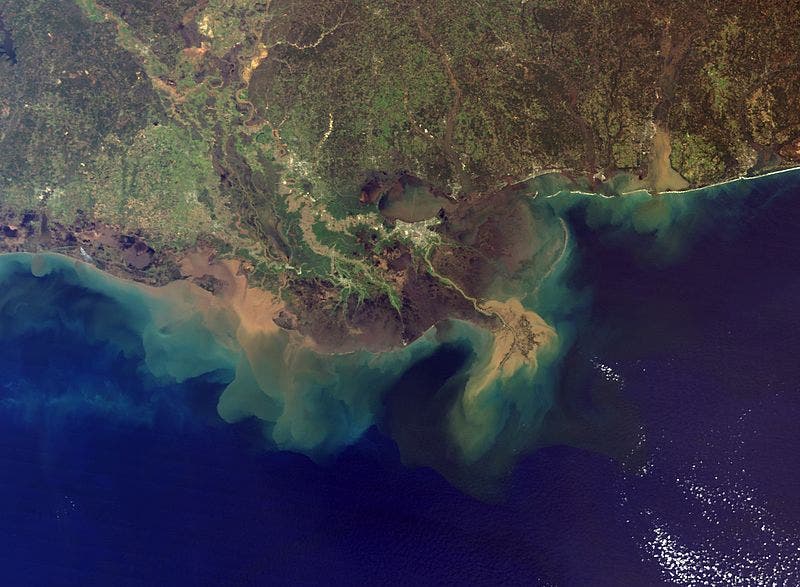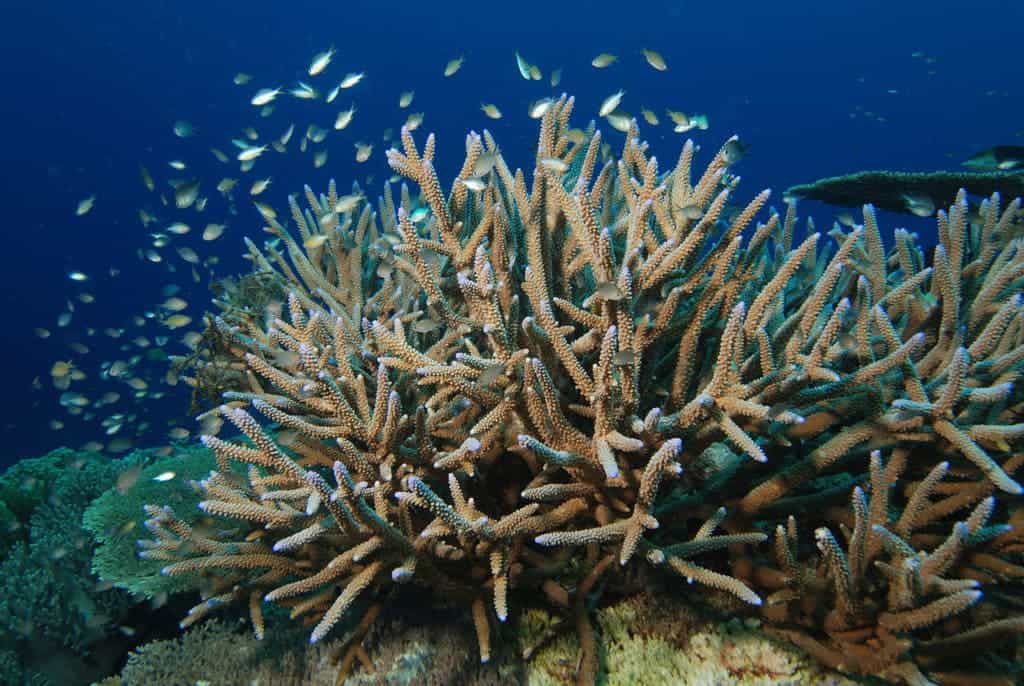Researchers at the University of Miami (UM) Rosenstiel School of Marine and Atmospheric Science say that local reefs have suffered extensive damage from sediment plumes stirred up by the 16-month dredging operation at the Port of Miami.

Natural sediment plumes from the Mississippi River (right) and the Atchafalaya River (left).
Image credits NASA.
The team estimates that over half a million corals were killed — those that lived within 550 yards (500 meters) of the dredged channel. Dredging operations, which involve clearing the seabed by scooping out mud, weeds, and rubbish with a dredge, seem to have impacted more than 15 miles (25 kilometers) of Florida’s reef tract, resulting in widespread coral death.
Deadly dredging
“Coral reefs worldwide are facing severe declines from climate change,” said Andrew Baker, associate professor of marine biology and ecology at the UM Rosenstiel School and senior author of the study. “If we want to conserve these ecosystems for the generations that come after us, it’s essential that we do all we can to conserve the corals we still have left.”
“These climate survivors may hold the key to understanding how some corals can survive global changes. We have to start locally by doing all we can to protect our remaining corals from impacts, like dredging, that we have the ability to control or prevent.”
Dredging operations at the Port of Miami began in 2013 as part of a larger construction effort in the area. The team analyzed data that was originally collected by consultants as part of the dredge’s environmental monitoring program. This program did note the loss of coral in the area but wrote it off as the consequence of a coral disease that was making a region-wide outbreak at the same time.
The present research ruled out disease by controlling for its impacts: the team looked at losses in coral species that were known to be immune to the outbreak. They tested whether corals closer to the dredge site were more likely to die during the dredging period than those further away. Most of the documented coral losses near the Port of Miami were the result of dredging, the team found.

Staghorn coral, a species of coral in the Florida Reef.
Image via Wikimedia.
“It was important to differentiate these multiple impacts occurring on the reefs to understand the direct effects of dredging specifically,” said lead author Ross Cunning, who began the project while a postdoctoral scientist at the UM Rosenstiel School and is now a research biologist at the Shedd Aquarium in Chicago.
“We brought together all the available data from satellites, sediment traps, and hundreds of underwater surveys. Together, the multiple, independent datasets clearly show that dredging caused the major damages observed on these reefs.”
The team also looked at sediment plumes, which are clouds of suspended sediment stirred up by the dredges — the team reports they’re big enough to be seen from space — and whether they could predict the damage observed on the reefs below. It turns out that they could; the team says that the satellite-tracked plumes had a very high correlation with coral death on the seafloor. This is the first study to show that satellite data can be reliably used to predict dredging impacts on corals and their habitats.
“This connection allowed us to predict impacts beyond where ship-based monitoring was taking place, and showed that dredging likely damaged this reef several kilometers away,” said study co-author Brian Barnes of the University of South Florida.
“While this same relationship may not apply in all projects, this is a remarkable finding that further establishes Earth-observing satellites as independent monitoring tools to fill in gaps where data are otherwise not available.”
Rachel Silverstein, executive director and waterkeeper of Miami Waterkeeper and a co-author of the study says the study uncovered a “devastating story of loss that we cannot afford to ignore any longer.” She hopes that the team’s findings can be used to guide restoration efforts and to prevent similar tragedies in the future.
Florida can boast the only nearshore reef in the continental United States, but its coral cover has declined by at least 70% since the 1970s, the team explains. Some species in this reef — Staghorn corals (Acropora cervicornis), which were once common in shallow water and have declined by an estimated 98% — are now listed as threatened under the Endangered Species Act. The sites directly adjacent to the dredge site have been designated as “critical habitat” for the staghorn corals.
The paper “Extensive coral mortality and critical habitat loss following dredging and their association with remotely-sensed sediment plumes,” has been published in the journal Marine Pollution Bulletin.









